Top Ten Craziest Switchback Cycle Climbs in the World
Gran Fondo fans love the high mountains, brutal climbs and most of all crazy hairpins, aka the switchback
Over the last 6 months on our facebook page we've been having competition to see who could name some of craziest climbs around the world.
We're pleased to say that in the end, at least one cyclist out there on the internet guessed each climb, even though we made some really obscure on purpose!
So here's our list of the top 10 craziest cycle climbs in the world, they'll have you spinning with desire, as this is a celebration of switchbacks!
10. Los Caracoles
This pass is so crazy, it has its own Twitter feed and snakes its way over the Andes between Chile and Argentina.
From Los Andes, in Chile, the road climbs a perfectly formed sets of switchbacks ending up at over 12,500 ft or 3,800m above sea level, with a statue of Christ the Redeemer to welcome you!
The first 29 hairpins climb 600m up the valley floor to around 2,800m and from there it’s 5km to a Chilean immigration point and then another 2km to the start of an old road which leads to the summit.
The summit is made significantly tougher by the altitude and the fact it's a gravel road at 10 percent plus gradient!
The wind can also slow you down, but conquer all that and you'll be rewarded by magnificent views of the switchbacks below and South America’s highest peak, Aconcagua.
Make sure you bring warm clothing – in 2013, 15,000 Chileans got stranded on the Argentinian side during a snowstorm.
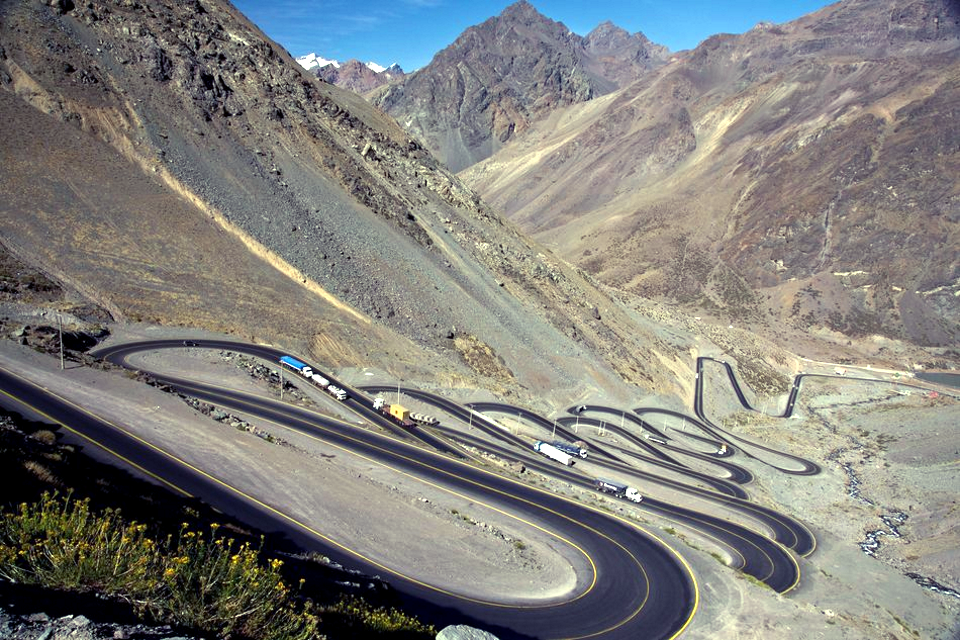
9. Alpe d'Huez
Alpe d'Huez is used regularly in the Tour de France and is located in the French Alps. Alberto Contador holds the record for the fastest ascent of the climb with 37' 30", achieved during the 2010 Critérium du Dauphiné.
The climb to the summit starts in the valley at Le Bourg d'Oisans and climbs 6,102 ft or 1,860 m for 8.6 miles or 13.8 km, with an average gradient of 8.1%, with 21 hairpin bends and a maximum gradient of 13%.
The switchbacks are named after the winners of stage finishers. All the hairpins had been named, and by the 22nd climb in 2001, the naming restarted at the bottom with Lance Armstrong's name added to Fausto Coppi's.
The Alpe has chaotic crowds of spectators with over half a million lining the hallowed 21 hairpins bends when it's used in the Tour de France.
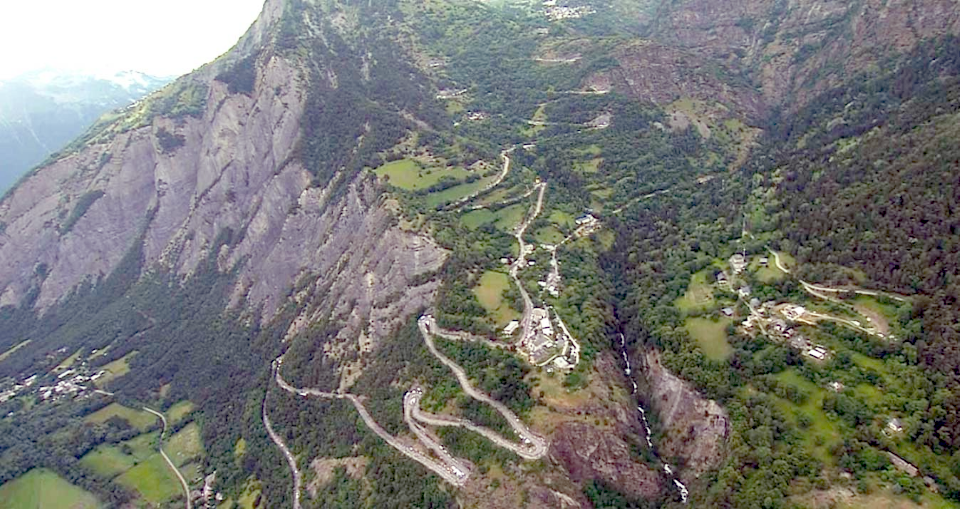
8. Passo dello Stelvio
Viewed from the air, the Passo dello Stelvio looks breathtaking, almost unreal and is utterly brutal.
It's only fully open during the summer months and even then you may find yourself snaking your way up through walls of snow. Starting from Prato on the Northern side, it boasts a vertical gain of 1,808m and 48 hairpin bends, all of them numbered on a stone by the road.
The Stelvio Pass is a mountain pass in northern Italy, at an elevation of 9,045 ft or 2,757 m above sea level. It is the highest paved mountain pass in the Eastern Alps, and the second highest in the Alps, just 43 ft or 13 m 43 ft below France's Col de l'Iseran.
The legendary Fausto Coppi, nicknamed Il Campionissimo (Champion of champions), said after cycling it that he “felt he was going to die” during the climb. It's fair to assume you'll feel even worse.
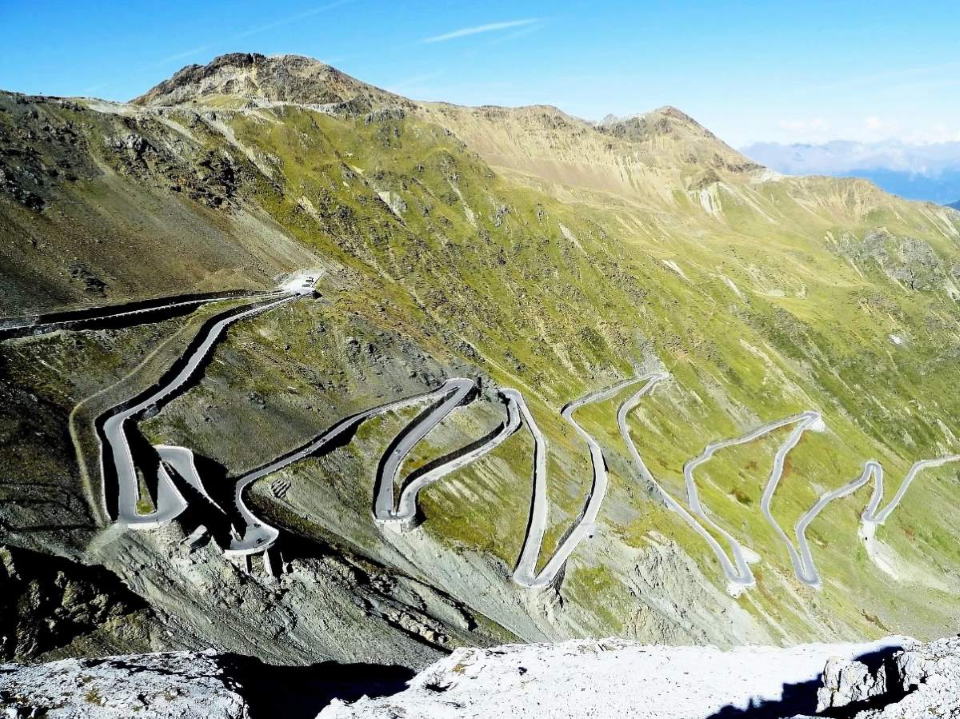
7. Sa Calobra
Sa Calobra – or the Cobra – as it's widely known has become Majorca’s most iconic climb, at just over 2,000 feet over six miles. The road is draped on the mountainside like a coiled snake in a series of steep hairpins layered as if a plate of spaghetti has been dropped in this small corner of the Sierra de Tramuntana mountains. It’s a marvel of engineering which makes it unique among the climbs we've encountered.
In the winter season, Majorca is a mecca for cyclists and just getting to Sa Calobra is an effort in itself which involves you riding over at least one of three mountains at over 680 metres.
It is Team Sky’s unofficial pre-season testing ground and is considered the toughest climb in Majorca. Ask any of the thousands of amateur cyclists who arrive in search of sun each spring.
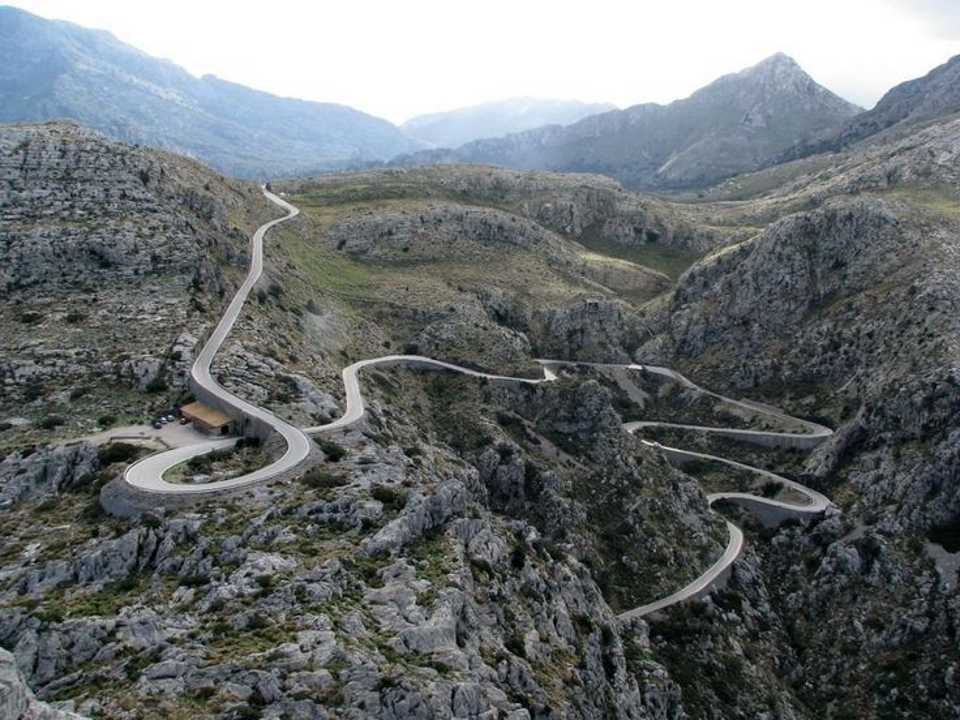
6. Col de Tende
With an amazing 48 switchbacks, the unpaved Col de Tende or Colle di Tenda in Italian, is a mountain pass in the Alps, close to the border between France and Italy at 1,870 m above sea level.
The gravel sections are very loose. The Col de Tende is the southernmost of the great Alpine passes. It’s reputed to be one of the oldest roads in Europe, laid down by the Phoenicians and later used by the Greeks who colonised Marseille and, after them, the Romans.
The historical importance of this crossing, has resulted in a immensely fortified ridgeline. The ruins of these fortifications remain. The climb itself is a tiny road, and closed to motorised traffic making it a real treat for cyclists who love riding roads less travelled.
Starting from Breil sur Roya, the climb is 29 km long, with an elevation gain of 989 meters. The average percentage is 3.4%. The climb starts very gradually and it is never very steep even on the last part.
Another jewel in the crown of French/Italian cycling. We can't wait to hear of Gravel Fondo that includes this beauty!
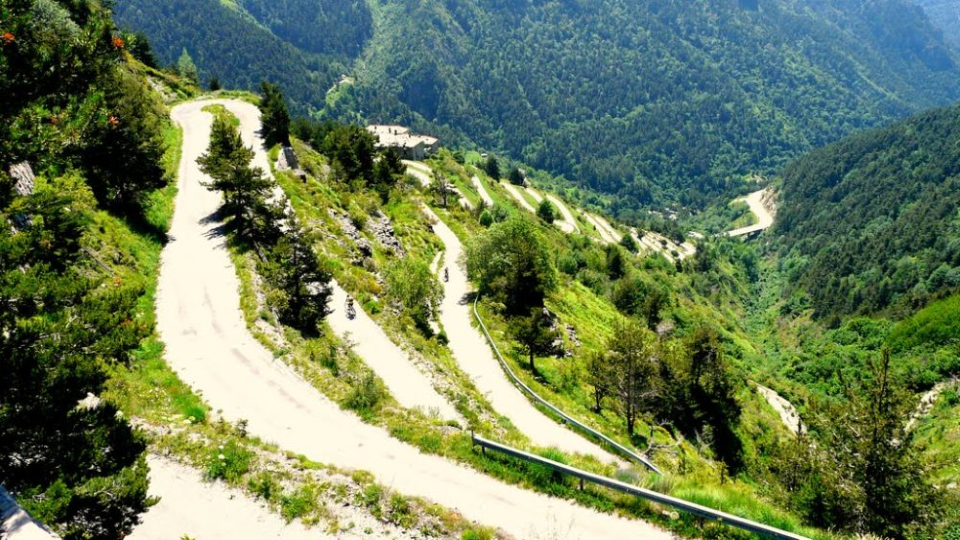
5. Lysefjorden Road
Lysefjord is a fjord located in south western Norway. With breathtaking views and scenery, it’s one of the famously unfamous switch backed roads in the world.
The road has its highest point in the Andersvatn lake, at an elevation of 3,057 feet or 932 m above the sea level.
This singletrack road is very dangerous because its 32 sharp bends have an average gradient of 9.4% and twists and turns sharply over a length of 18 miles or 29 km.
It means anyone cycling this climb needs to be extremely careful, however it's remoteness means there's hardly any traffic. This road is only open for a few months of the year in summer.
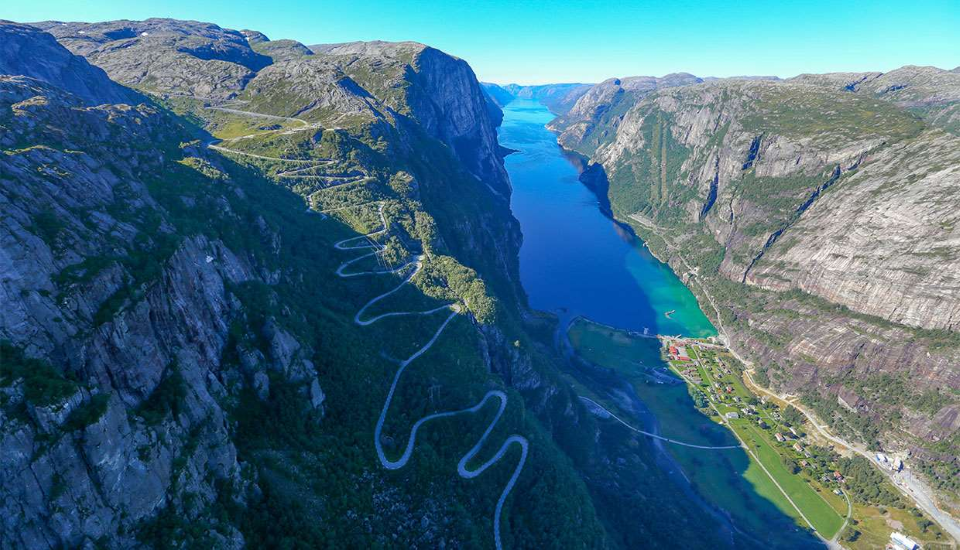
4. Passo San Boldo
The Passo San Boldo is a small mountain pass that lies at the southern edge of the Alps and connects the Val Belluna with the Val Mareno over a height of 2,316 ft or 706 m.
The mountain pass is only one lane wide and the traffic is regulated by several sets of lights. There is a speed limit of 19 mph or 30 km/h.
There are five tunnels blasted into the rock with hairpin turns and six bridges.
The pass has colorful history, built by Austro-Hungarian army during World War I in 1918, it is nicknamed the "Road of 100 Days." Prisoners of war, the elderly, women, and children of the local population were pressed into service to build it. In its final construction phase, 1,400 workers worked in three shifts
Despite the extreme topography, the requirement that the road be used for transporting heavy artillery and supplies meant that the grade does not exceed 12%.
It's one of the most iconic cycle climbs in Italy and is famously used in the Haute Route Dololmites.
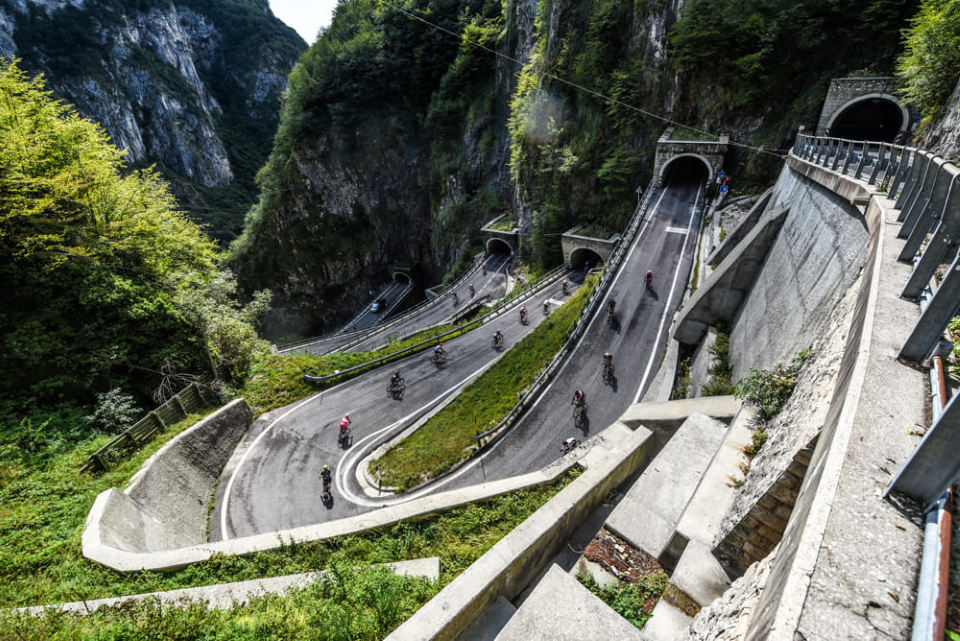
3. Oberfelben Mountain Road
Way off the beaten path in Austria, this old mountain road is a dead end, in fact the only other thing it leads to is Brentling Mountain, which at 2,243m high, overlooks both the Felber and the Amertal near Mittersill.
The main road, which includes a tunnel, connects Tyrol in the south to Salzburg in the north. From the north halfway up the Felbertauern Strasse, the road turns off towards Hintersee Lake.
From the car park at Hintersee Lake the track climbs up the Trudental along a hiking trail. It features 20 switchbacks to nowhere and is probably the most famous unfamous climb in the world!
Just finding this climb is an epic journey in itself, but what awaits is pure magic.
This is a totally unpaved, epic, Gravel Grinder. This is now Gran Fondo's Guide top Bucket List climb!
Anyone out there actually ridden this?
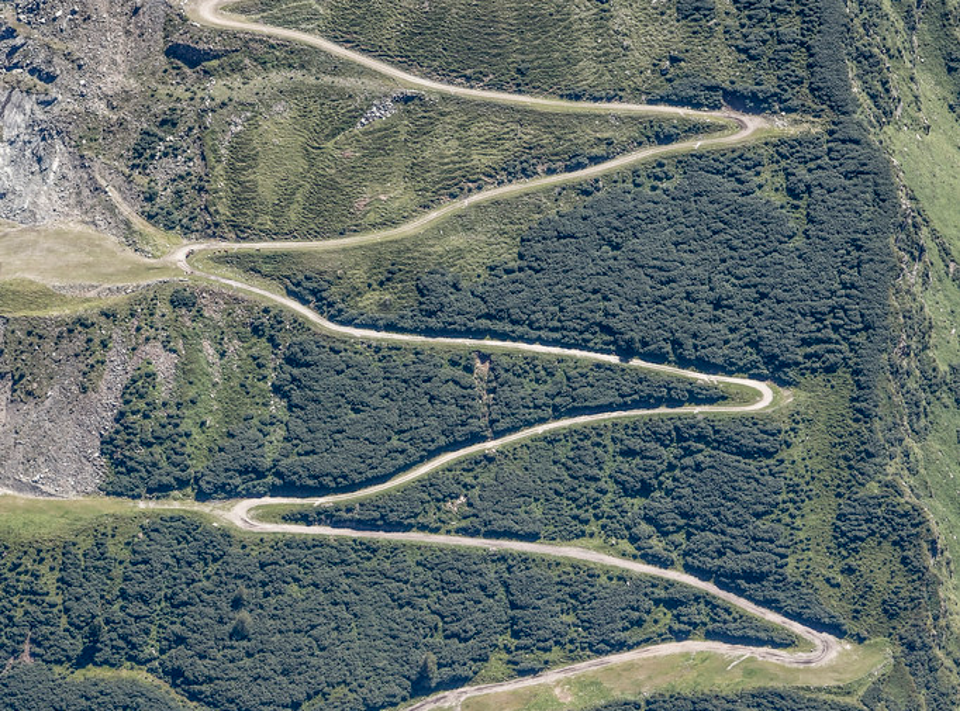
2. Col de Chaussy
The Col de Chaussy is one of the lesser-known climbs in France but the road is like no other in the Alps!
It starts with the Les Lacets de Montvernier, which is French for ‘the Shoelaces of Montvernier’ and the climb’s beauty is how it scales the cliff face above the Maurienne valley, as if a shoelace had been dropped from the sky. It’s a fun, narrow, silly road but it’s only the beginning. The Lacets are only about 20% of the climb to Chaussy, with 17 hairpins stacked one on top of another in just 3km, an astonishing piece of mountain road engineering.
Col du Chaussy is a difficult climb of over 1,000 metres of climbing with some very steep stretches.
After the Montvernier hairpins, the climb continues for another 9 km, winding through Alpine fields. A total altitude gain of more than 1,000m and average gradient of 8% means it’s not only the hairpins that will take your breath away.
You can actually see this climb from the A43 from Alberville to Saint-Jean-de-Maurienne towards the Italian border.
The climb was used in the 2015 Tour de France on Stage 18. Professional cyclist Robert Gesink holds the Strava record with a whopping VAM of 1,650 meters per hour!
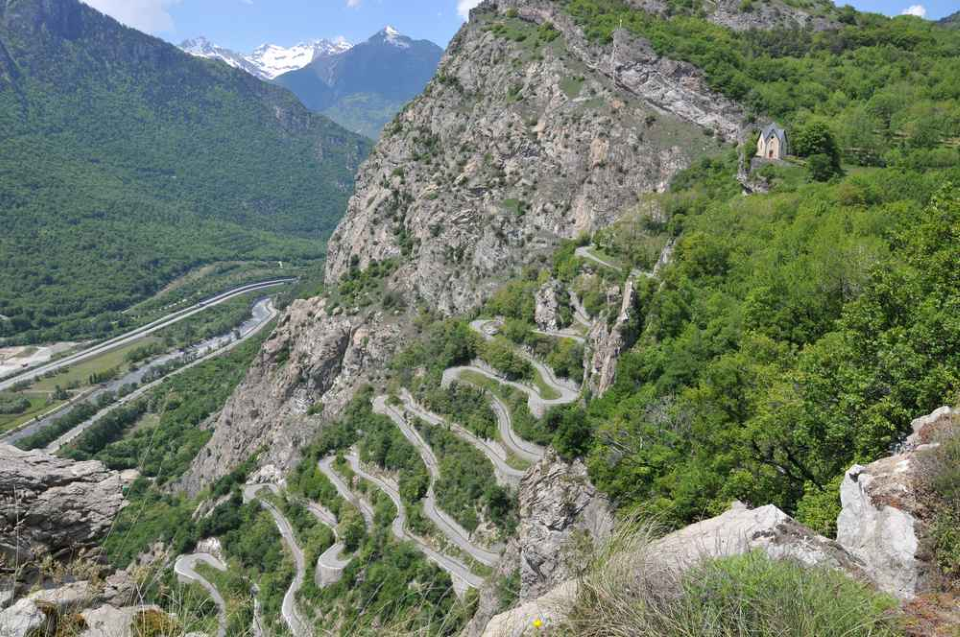
1. St. Gotthard Pass
The Paris-Roubaix of the Alps, Swiss-style with cobbles, nice and smooth.
The Old Tremola (Trembling Valley) road up the south side of St. Gotthard Pass (also known as the Passo San Gottardo or Passo del San Gottardo) is one of the truly special high Alpine climbs for cyclists.
The pass has for centuries, been one of the busiest routes linking the north German speaking and south Italian speaking side of the Swiss Alps and dates back to Roman times.
At an elevation of 6,860 feet or 2,091m above the sea level, the St. Gotthard Pass was named after a chapel erected aound 1300 in honor of Saint Gotthard, bishop of Hildesheim, near Hannover, in Germany.
The surface of the old pass is cobblestoned to an imacculate condition and is only open between July and September due to snow. The 7.3-mile climb has an average gradient of eight per cent.
The old road is difficult to find and has been replaced by a newer tunnelled road for traffic. For cyclists, this means its virtually traffic free and provides some the most breathtaking views of the Swiss Alps.
You'll never ever forget climbing the St. Gottard Pass, this is the ultimate bucket list, switched back cobbled climb in the world!



 Lorne, Australia
Lorne, Australia






